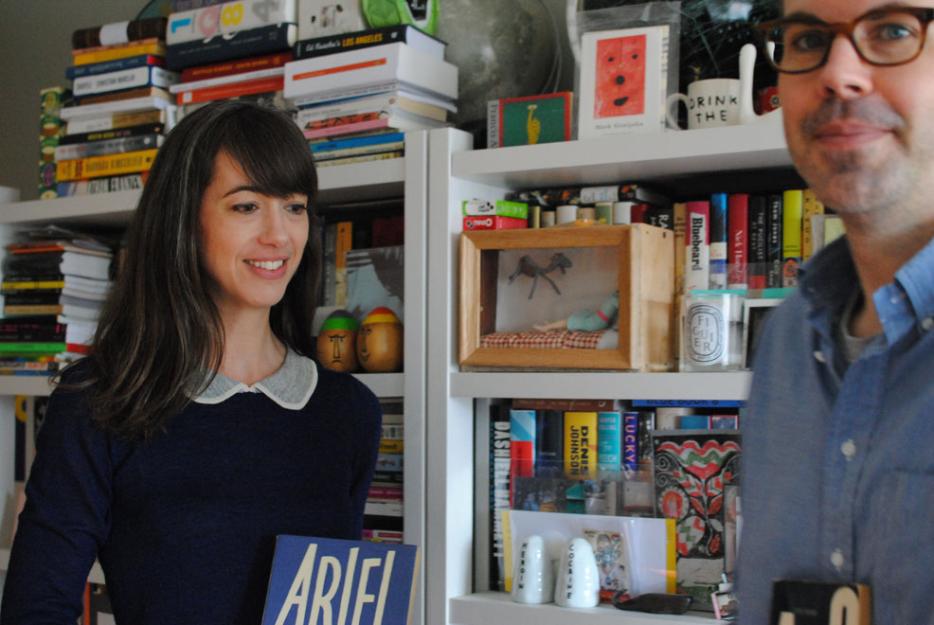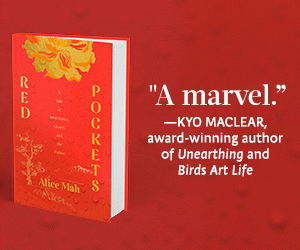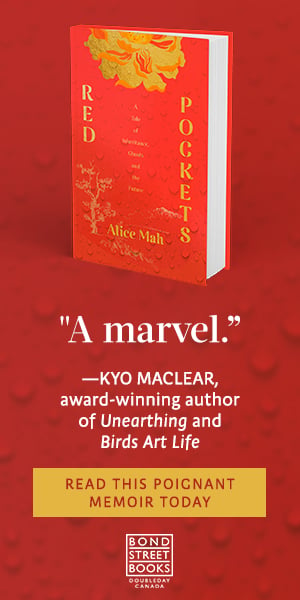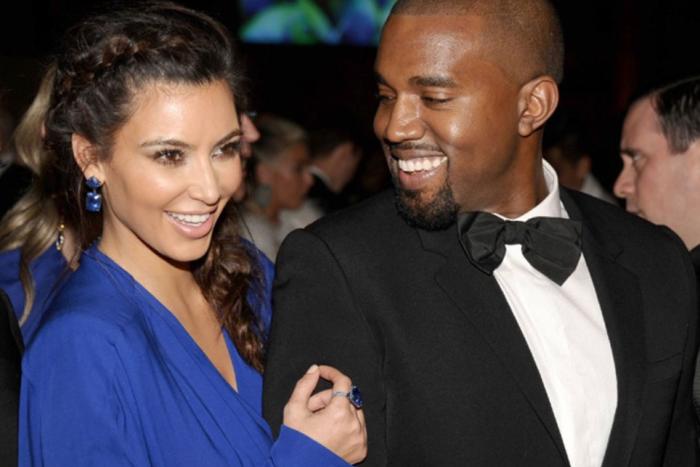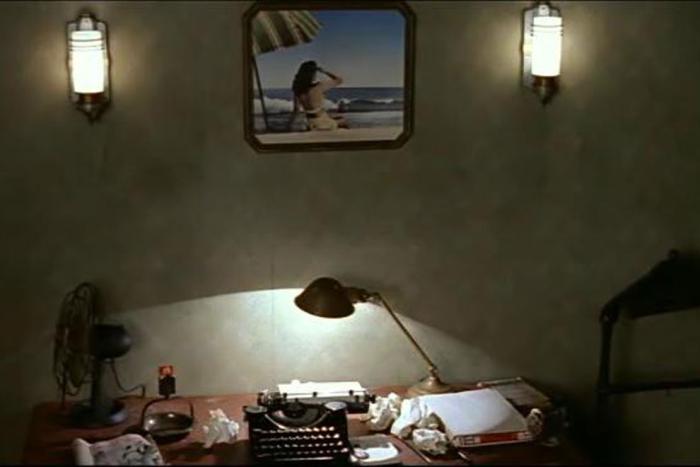Shelf Esteem is a weekly measure of the books on the shelves of writers, editors, and other word lovers, as told to Emily M. Keeler. This week’s shelf belongs to Wendy Gomoll and Paul Van Kooy, the publishers of Paul + Wendy Projects, a small company that publishes artist books and other multiples. Wendy is also currently an archival technician for the AGO, and in the last few months of an intensive graduate program at the University of Toronto. Their main shelf is in the bright living and dining room of their downtown Toronto apartment, though there are books and artworks stacked neatly, if a little precariously, throughout their home.
WENDY: The shelf is kind of Paul’s baby.
PAUL: Yeah, so it’s kind of mostly art books at the bottom, literature at the top, with a kind of mushy middle. The organization of the shelf is mostly just finding space at this point.
WENDY: It’s three rows deep in some of those shelves.
PAUL: With the paperbacks, yes, because they’re smaller—they’re softcover and paper. Maybe not as aesthetically pleasing, some of them. I don’t know. We’re so starved for storage, I guess so many of them get crammed in the back. It’s just all our paperbacks. There’s like a bunch of Penguin books I’ve collected. Do you feel like you’re being ripped off, like you’re not seeing our true taste?
WENDY: Do you feel like the dirty secrets are back there?
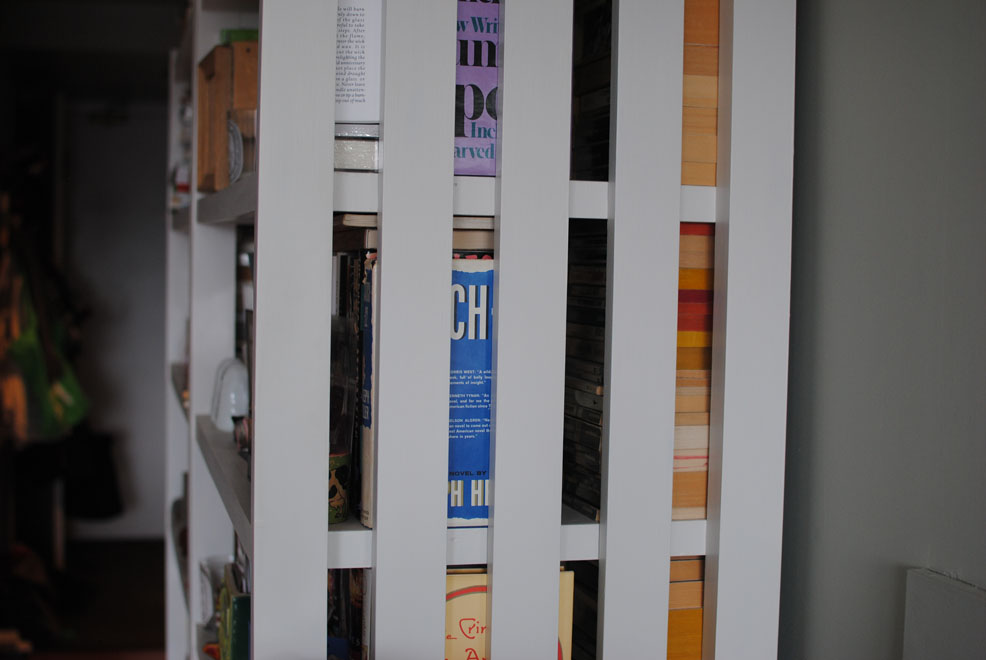
PAUL: Look, I just wanna point out that there’s no shame in any of those books in the back. Like, in my ideal house I’d have a full room that would be a library. It’s about straight space. We have to really edit things, living in such a small space. We have a lot of junk. The problem is we’ve got the flat files for art, cds, records, there’s just too much stuff, it takes up too much space. I’m kind of bad at getting rid of things.
WENDY: Yeah, you really are. We did a cull once, when we were painting the shelf. We had to take everything off of there, so basically the entire contents of our apartment. There were books piled up under the couch and in all the corners.
PAUL: I liked that.
WENDY: There wasn’t room to walk.
PAUL: I kind of really like clutter. But then I also like it very clean, too. So I have that inner battle.


